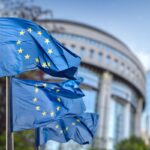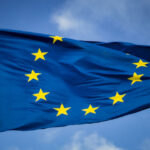
As companies prepare for mandatory reporting against the EU’s new Corporate Social Responsibility Directive, We Mean Business Coalition shares interesting examples from pioneers already aligning with the standards to help others navigate the regulatory maze.
The European Union’s recent adoption of the Corporate Social Responsibility Directive (CSRD) is a game-changer. This directive, accompanied by its underlying European Sustainability Reporting Standards (ESRS), will revolutionize the way businesses report their environmental, social, and governance (ESG) practices. And while reporting against these standards won’t begin until the 2024 reporting cycle, starting from early 2025, the winds of change are already blowing.
As early as for reporting year 2023, we witnessed pioneers stepping up to the plate, choosing to disclose their practices in alignment with these new standards at least one year in advance. What is more intriguing is that even companies slated for compliance after 2024 have eagerly embraced the directive, recognizing the value in adhering to these emerging norms and regulations.
But what exactly does this mean for businesses? How are they navigating this uncharted territory, and what lessons can be gleaned from their experiences? Our new report looks to unravel these questions by scrutinizing the CSRD reports of 30 early adopters. Our goal? To uncover compelling examples that could inspire others as they prepare to embark on their own reporting journeys. To this end, we have selected 75 interesting solutions covering themes from double materiality assessment to climate transition activity plans and Scope 3 hot-spotting, among many others.
Our analysis is not exhaustive. The landscape of CSRD early adopters is vast and varied, and while we’ve selected 30 reports for review, there are undoubtedly many more out there. We don’t claim scientific rigor in our findings, nor do we assert that the examples provided are flawless representations of CSRD compliance. Instead, we present these cases as interesting illustrations of innovative approaches that companies – and their auditors – may find valuable in shaping their reporting strategies.
Our analysis focuses on novel approaches. Rather than rehashing well-known reporting approaches, for instance for Greenhouse Gas Scope 1 and 2, we spotlight the on the new and more challenging aspects of CSRD compliance. By omitting examples that are commonplace, we instead highlight those that break new ground and push the boundaries of traditional reporting practices, just as we focus on areas where companies have told us they are struggling.
Each chapter of the report guides readers through the regulatory maze while offering glimpses into emergent innovative solutions on the horizon. We encourage readers to delve deeper, to explore the regulations themselves and draw their own conclusions from the wealth of information provided.
As we embark on this voyage into the future of corporate responsibility, one thing is clear: the CSRD isn’t just a directive; it’s a catalyst for change, propelling businesses towards a more sustainable and transparent future. And as we uncover the stories and strategies of these early adopters, we pave the way for a new era of corporate accountability and integrity.
- Download the report (pdf)



